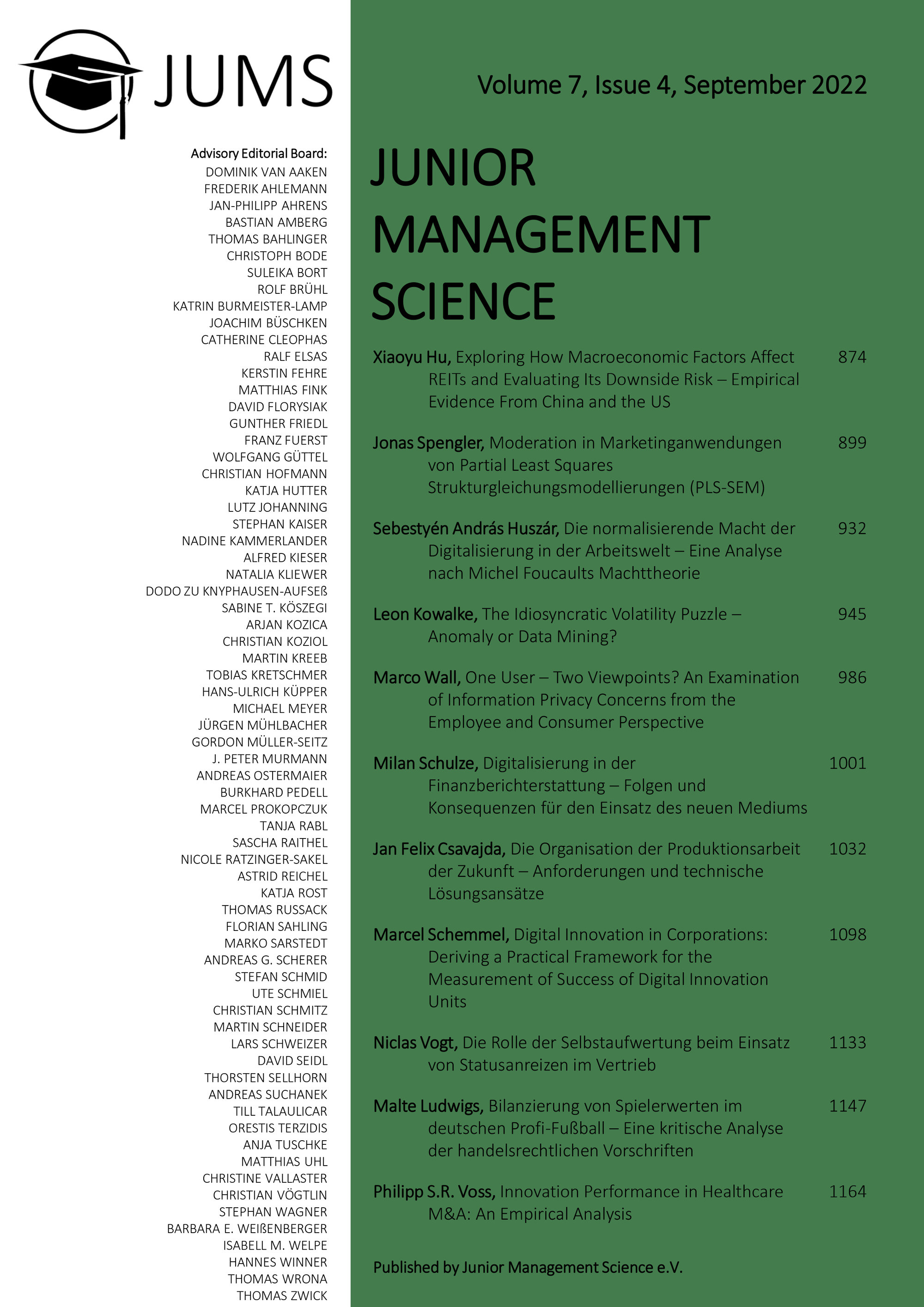Abstract
Steigende Ablösesummen im professionellen Fußball sorgen für eine zunehmende Einflussnahme von Spielertransfers auf das Bilanzbild der Vereine. Eine sachgerechte Bilanzierung und Bewertung von Spielervermögen, birgt aber im Rahmen der Rechnungslegung einige Unklarheiten und Probleme. Das Ziel der vorliegenden Arbeit ist es, die bilanzielle Behandlung eines Spielertransfers nach den Vorschriften des Handelsgesetzbuches zu veranschaulichen. Des Weiteren wird betrachtet, inwieweit die Bilanzierungspraxis im Fußball die grundsätzlichen Zwecke der Rechnungslegung erfüllt. Zu Beginn erfolgt eine Darstellung des rechtlichen Ordnungsrahmens von Spielertransfers. Anschließend werden die Vorschriften für den Ansatz und die Bewertung von Spielervermögen näher erläutert, um abschließend aufzuzeigen, welche Problemstellungen sich aus der aktuellen Bilanzierungspraxis ergeben. Die Ergebnisse zeigen, dass Vereine neben den allgemeinen Vorschriften des HGB zusätzliche fußballspezifische Posten zu berücksichtigen haben. Dieses führt zu einem umfassenden Regelungskonstrukt, dass den Vereinen dennoch einen bilanzpolitischen Spielraum überlässt. Die Bilanzposition Spielervermögen hat somit nur eine eingeschränkte Aussagekraft hinsichtlich der tatsächlichen wirtschaftlichen Verhältnisse im Verein.
Keywords: Bilanzierung; Fußball; Spielerwerte; Spielertransfers.

Dieses Werk steht unter der Lizenz Creative Commons Namensnennung 4.0 International.

